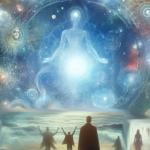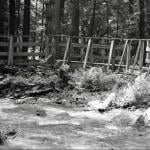Having established that ancient readers would have associated divine rest with a temple as the locus of that rest, Walton now moves on to the theme of the cosmos as divine temple. Readers of the New Testament and other ancient Jewish literature may already have a significant background against which to appreciate this point. In the New Testament, the letter to the Hebrews emphasizes the parallels between the earthly place of worship and the cosmic reality of which it is a shadow. Josephus mentions that celestial realities were depicted on the temple curtain (War V,5.4 ¶214). In this chapter parallels from closer times are offered, but the evidence from Josephus is also mentioned, as is evidence from other Biblical texts.
Walton sums up the main points of the chapter on p.84, noting that in both the Bible and the ancient Near East, “the temple is viewed as a microcosm”, and the imagery, function and process of constructing the temple relate to the cosmos. Thus, while the seventh day is something of an anticlimax for many modern readers (indeed, it gets shoved over into the next chapter!), for ancient readers the seventh day was the whole point, since what makes a temple a temple is the fact that the deity comes and rests there.












